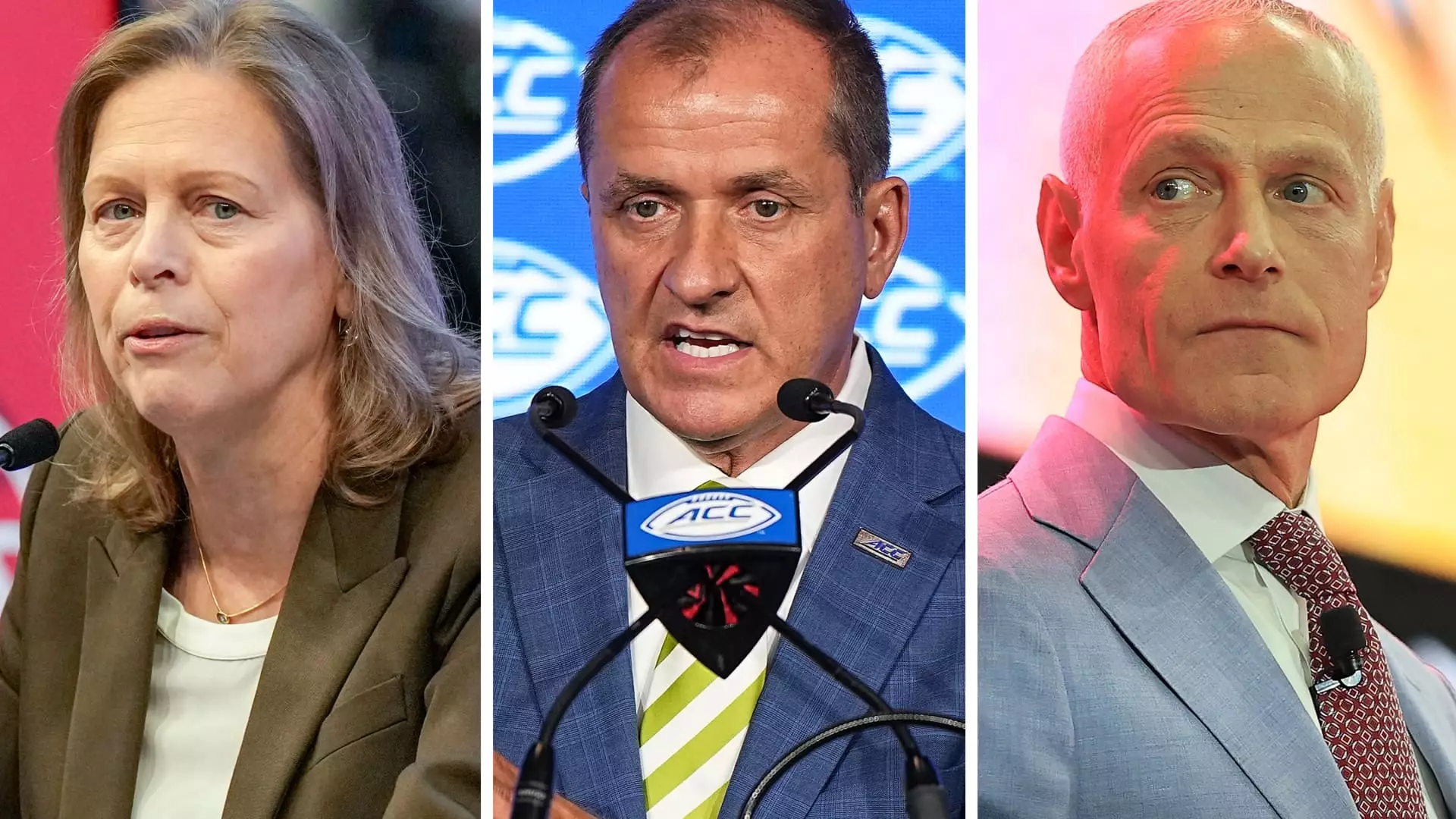Modern college sports are painted as a realm of boundless opportunity and rising fortunes, but beneath this shiny veneer lies a complex web of financial strain and strategic uncertainty. Administrators proclaim that revenues are soaring, yet there’s a troubling disconnect: expenses are escalating just as rapidly. This discrepancy challenges the narrative of sustainable growth, suggesting that the current model may be built on shaky foundations. The assumption that more money automatically translates into a healthier ecosystem is misguided; it masks the underlying risk that unchecked financial commitments—particularly to player payments—may threaten the long-term viability of college sports as we know it.
Conferences like the Big East and ACC are experimenting with new revenue-sharing schemes, ostensibly to distribute income more equitably among institutions. While this might seem like a move toward fairness, it raises questions about the true nature of college sports’ financial sustainability. Allocating a fixed sum to pay players—initially capped at $20.5 million per school—appears as a band-aid rather than a cure. As the cap incrementally rises over the next decade, the economic burden will only deepen, pressing schools to find additional streams of income to offset burgeoning expenses. This strategic scramble suggests an environment that is neither calm nor certain but rather one marked by continual adaptation and financial juggling.
Commercialization and the Commodification of College Culture
The infusion of private capital and reliance on external business interests further complicate the moral and strategic landscape of college athletics. Yormark’s dismissive stance on the idea of a “financial crisis” reveals a stark confidence—or perhaps complacency—in the current approach. Still, his acknowledgment that schools are increasingly viewing athletics as central to their brand equity hints at an underlying transformation: sports are becoming an extension of corporate branding rather than mere student activities.
This shift risks diluting the core purpose of college sports: fostering student-athletes’ development and emphasizing academic achievement. Instead, the focus moves toward maximizing profit, attracting viewers, and satisfying external stakeholders. Partnerships with Wall Street and outside investors are becoming a new frontier, prompting questions about where the lines are drawn between educational mission and financial speculation. Is this a prudent evolution or a dangerous concession to commercial interests that could undermine the essence of collegiate competition?
Furthermore, the debate over sharing revenue—particularly whether to distribute football and men’s basketball earnings equitably—highlights inherent tensions. Ackerman’s concern about legal disputes and Congress possibly intervening reflects deeper societal debates about fairness and the role of public oversight. As the power dynamics shift, the aspiration for equal opportunity for all athletes and fans increasingly seems like a secondary concern to financial interests.
The Future of Revenue Distribution and Athletic Investment
Another critical point of reflection is how television rights are being reimagined. The ACC’s move toward an incentive-based distribution model—where postseason success and TV viewership determine share size—introduces a new layer of competitive stratification. While such models can motivate better performance, they risk creating a tiered system that privileges already-successful programs and disadvantages smaller or less prominent schools.
Yormark’s opposition to pooling television rights across conferences underscores a belief in scarcity-driven value; demand, he argues, fuels high prices. But this perspective overlooks the broader societal good that could emerge from a more unified, accessible sports broadcasting ecosystem. Limiting access to lucrative TV deals might maintain exclusivity but at the cost of broadening the reach and equity of college sports.
Amid these financial debates, enthusiasm remains for expanding alternative markets like women’s volleyball, which is garnering record audiences. This suggests that while the big-ticket revenues from football and men’s basketball dominate the conversation, smaller sports could serve as growth engines that reinforce the diversity and inclusivity of college athletics. Investing in these burgeoning sports not only enhances the cultural fabric of college sports but also presents tangible opportunities for sustainable expansion without the same level of financial risk.
The current trajectory of college sports reveals a landscape grappling with conflicting priorities: the pursuit of revenue growth versus the preservation of educational and athletic integrity. Without careful stewardship, the increasing commodification, privatization, and stratification threaten to distort the foundational values that once defined collegiate athletics. The challenge lies in forging a model that champions both financial sustainability and the mission of higher education, ensuring that sports remain a catalyst for development rather than a pathway to financial instability.


Leave a Reply